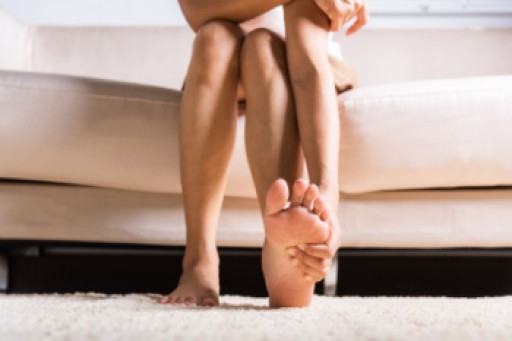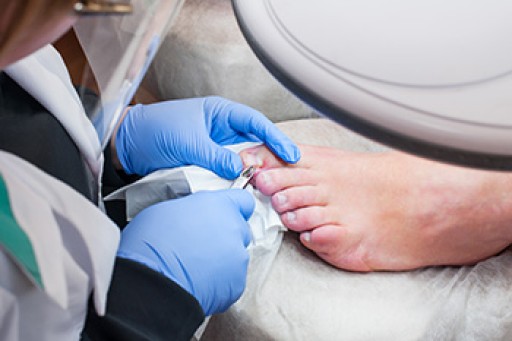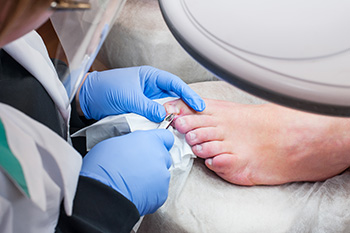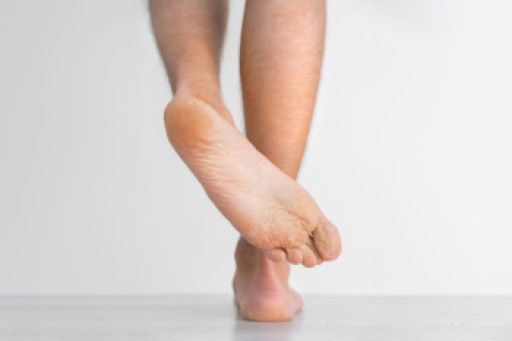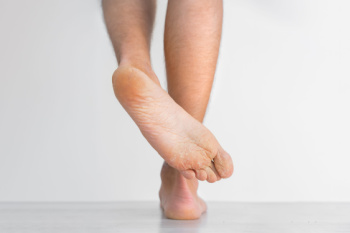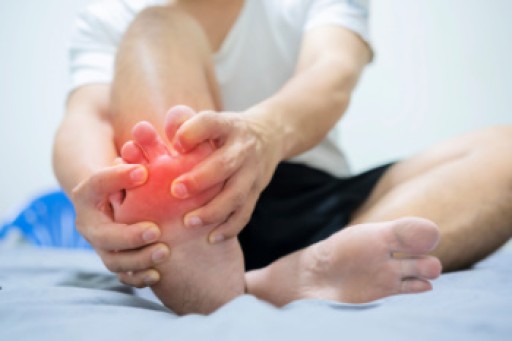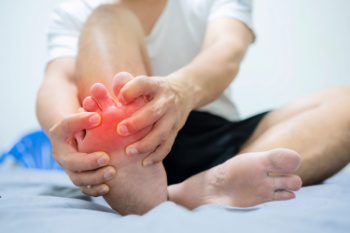
Pain in the ball of the foot occurs when the area between the toes and the long bones of the feet is placed under too much pressure. This part of the foot absorbs the impact of walking and running, so when the bones and joints located here do not line up properly, discomfort can follow. Conditions like arthritis can cause swelling and stiffness in these joints, while toe deformities such as hammer toes or bunions may increase strain. As people age, the natural fat pad that cushions the ball of the foot often becomes thinner, leaving less protection against pressure. Repetitive activities such as jogging, playing sports, or even long hours of standing can make the pain worse. Wearing shoes that lack adequate support, like high heels or flip-flops, may also add stress to this area. A podiatrist can examine the foot, prescribe custom orthotics to reduce pressure, and provide surgery, if needed. If you have pain in the ball of your foot, it is suggested that you schedule an appointment with a podiatrist for an exam and appropriate treatment.
Foot Pain
Foot pain can be extremely painful and debilitating. If you have a foot pain, consult with the podiatrists from Boston Common Podiatry. Our doctors will assess your condition and provide you with quality foot and ankle treatment.
Causes
Foot pain is a very broad condition that could be caused by one or more ailments. The most common include:
- Bunions
- Hammertoes
- Plantar Fasciitis
- Bone Spurs
- Corns
- Tarsal Tunnel Syndrome
- Ingrown Toenails
- Arthritis (such as Gout, Rheumatoid, and Osteoarthritis)
- Flat Feet
- Injury (from stress fractures, broken toe, foot, ankle, Achilles tendon ruptures, and sprains)
- And more
Diagnosis
To figure out the cause of foot pain, podiatrists utilize several different methods. This can range from simple visual inspections and sensation tests to X-rays and MRI scans. Prior medical history, family medical history, and any recent physical traumatic events will all be taken into consideration for a proper diagnosis.
Treatment
Treatment depends upon the cause of the foot pain. Whether it is resting, staying off the foot, or having surgery; podiatrists have a number of treatment options available for foot pain.
If you have any questions, please feel free to contact our office located in Boston, MA . We offer the newest diagnostic and treatment technologies for all your foot care needs.
